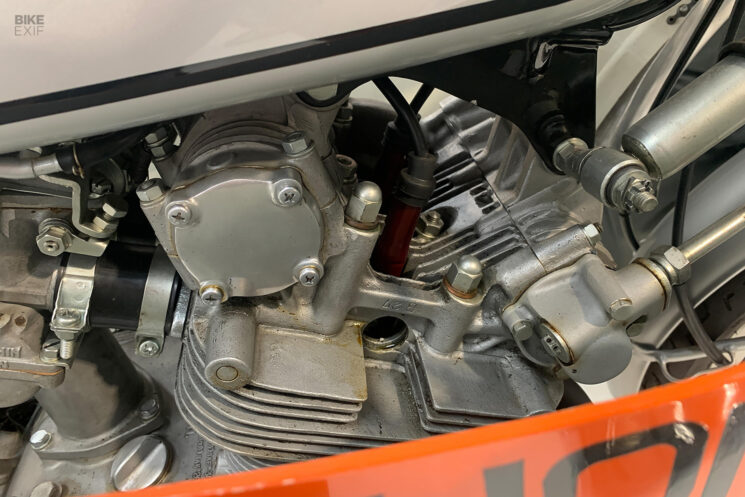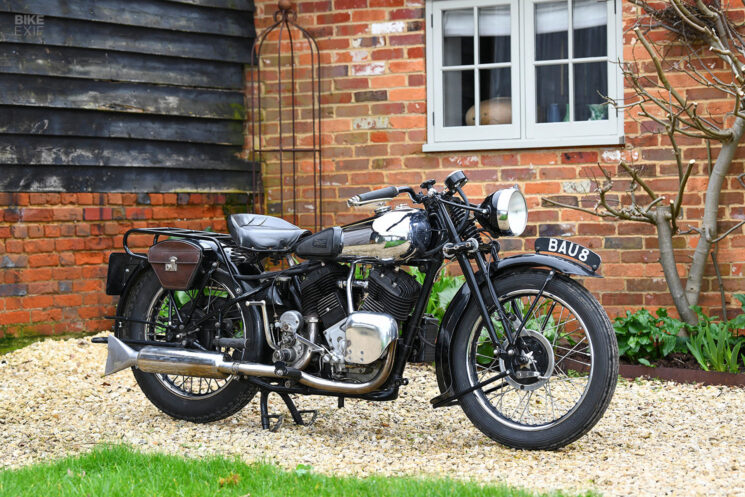
The classic motorcycle auction scene is booming, and Bonhams’ Spring Stafford Sale never fails to bring its share of headline-grabbing bikes with requisite hammer prices. April 21 concluded the 2024 event, and when the dust settled, 95% of the 365 lots were sold, for a total of £3 million [$3,743,865].
We’ve compiled the top 10 sellers from the sale here, including a host of iconic Brits and road-racing Hondas, seven of which brought six figures—or close to it anyway.
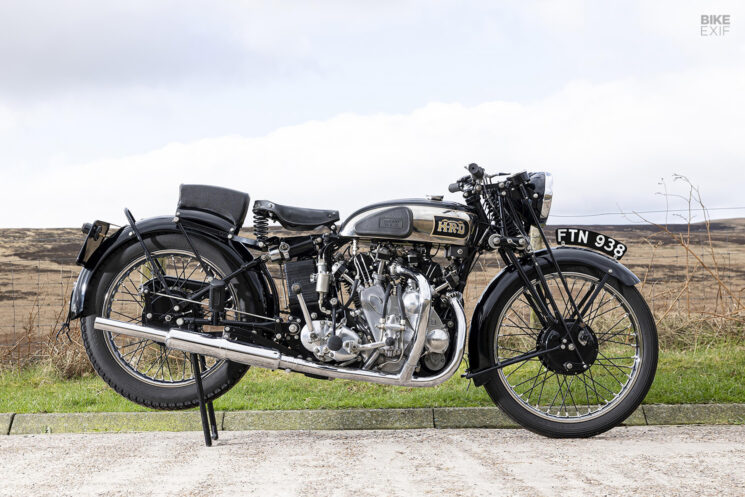
1938 Vincent-HRD Rapide Series-A
One of just 79 built, the Series-A Rapide carried Vincent’s first V-twin engine and offered staggering performance right out of the gate. Able to best the Brough-Superior SS100’s top speed at 110 mph, the Rapide quickly established Vincent as one of the fastest bikes of the day. There are faster and more iconic Vincents, but it’s safe to say the Series-A Rapide put Vincent on the map.
Phillip Vincent purchased the financially troubled HRD brand in 1928, and soon after, he and engineer Philip Irving designed the 499 cc OHV Meteor engine used in the Comet and Meteor models. Irving quickly realized the Meteor top ends could be combined on a single crankcase, resulting in a 47-degree V-twin displacing 998 cc, and significant costs were saved by using the existing Meteor tooling.
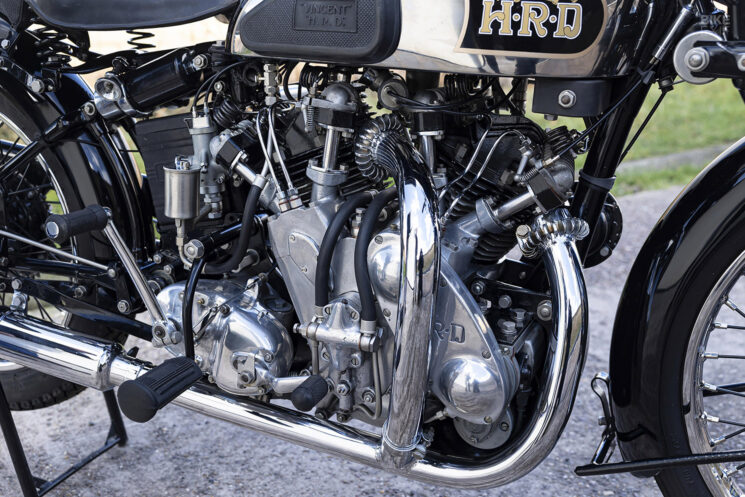
The engine was fed by two Amal carburetors, and dry-sump lubrication was routed with various external pipes and hoses, leading to the Series-A’s nickname—plumbers nightmare. It produced 45 hp at 5,500 rpm, and was compact enough to utilize much of Vincent’s existing single-cylinder running gear, notably the Comet’s divorced Burman four-speed, which proved to be the bike’s weak link all too often.
Despite its innovative cantilever rear suspension and blistering top speed, Vincent won over few buyers with the Rapide when it debuted in 1936. ‘Ginger’ Wood smashed lap records at Donington Park and set a standing quarter-mile time of 11.75 seconds at the Gatwick sprint in 1938, but still, only 79 bikes were sold before Vincent’s Stevenage factory was retooled for arms in 1939.
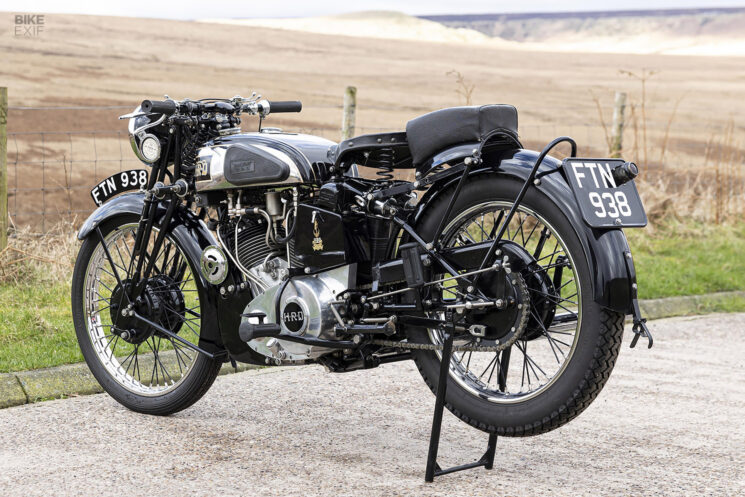
The following years would promote Vincent to icon status, and as such, this numbers-matching Series-A Rapide was predicted to be Bonham’s biggest attraction of the sale. With a comprehensive restoration in completed in 2017, every part of the bike was restored with correct NOS items or refurbished originals, with only a few reproduction parts used. Lot 365 fell just short of Bonham’s pre-auction estimate, and a few others to have sold in the last decade, and changed hands for £228,850 [$285,667].
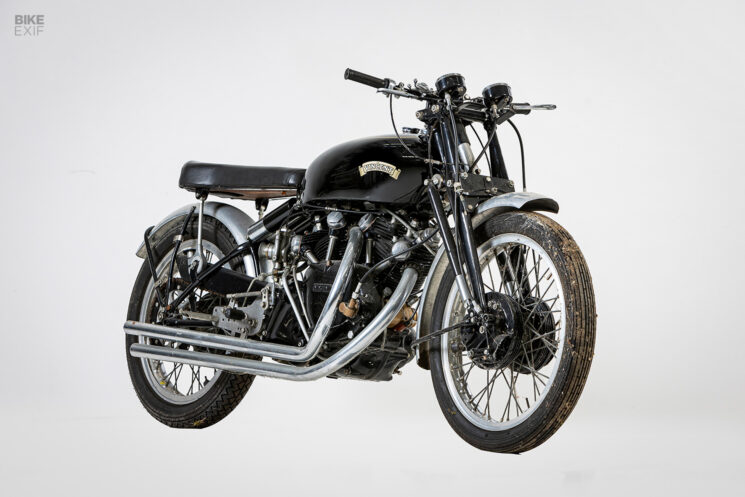
1949 Vincent Black Lightning Series-C
With a top speed of 125 mph, Vincent had the fastest thing on wheels in the late ’40s with the Black Shadow, but still, the mighty 50-degree V-twin had more to give. Building on the Shadow’s strengths, Vincent unleashed a stripped-down version with more compression, better internals and lightweight aluminum and magnesium parts. Aptly named the Black Lightning, just 34 were built.
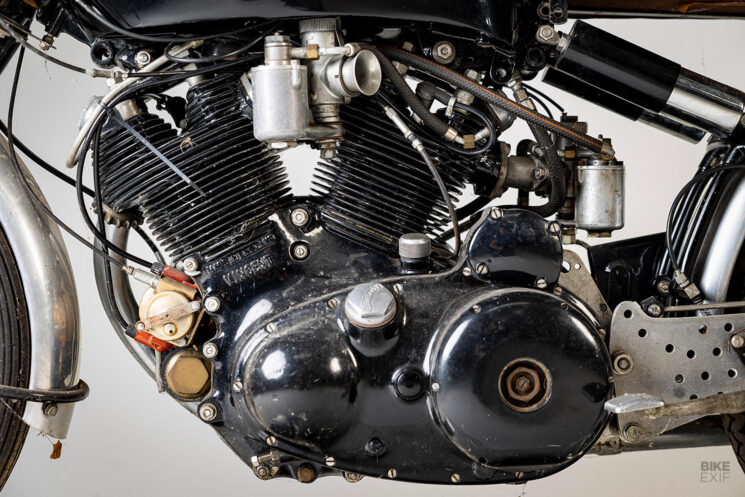
With its racy origins and such slim production figures, the Vincent Black Lightning was immediately poised as an investment-caliber machine, only accessible for racers with the deepest pockets. Soon after, Rollie Free body surfed his Black Lightning in his bare britches in 1948 to a 150-mph record at Bonneville, becoming one of the most iconic moments in motorcycle history, and solidifying the Lightning’s historical status.
Lot 364 is a 1949 Series-C Black Shadow that was one of two specially equipped for sidecar racing and sent to Poland. The duo of Vincents had an illustrious racing career in the Eastern Block and remained there until the 1970s, when they were discovered and sent back to the U.K. Restored around the year 2000, this Vincent Black Shadow requires some recommissioning before use, but still crossed the block for a staggering £149,500 [$186,130].
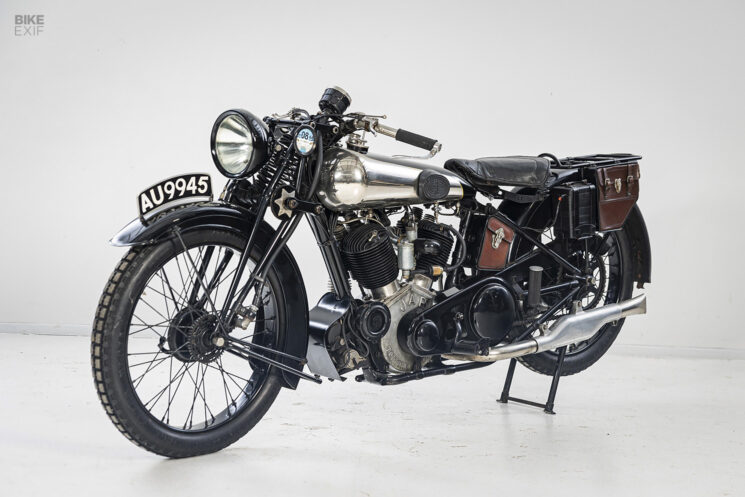
1924 Brough-Superior SS80
The SS80 was one of George Brough’s earliest successes after establishing Brough-Superior in 1919, with production starting in 1922 and ending with the outbreak of WWII in 1939. Timeless appeal, competitive performance and Brough’s exhaustive manufacturing standards virtually guarantee any Brough motorcycle a center-stage presence at auction.
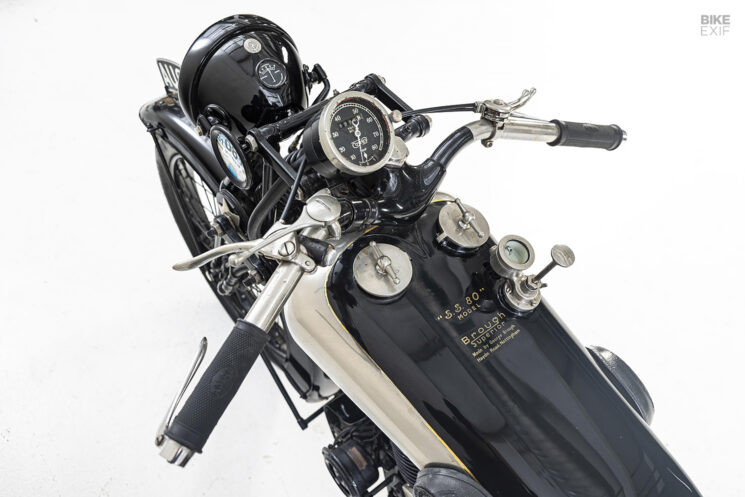
Registered under AU 9945 and fit with the side-valve, 980 cc J.A.P. engine, this early SS80 was purchased by a friend and believer in Brough named Sam Ratcliffe. While Ratcliffe competed often in trials events of the early 1920s, his new SS80 was used as transportation for his growing family and would remain with the Ratcliffes for years. The bike eventually changed hands and was restored in the 1990s, but was reunited with the Ratcliffes when Sam’s son and grandson purchased the bike in 2001.
Having been recently displayed at the Atwell-Wilson Motor Museum, AU 9945 is said to be in excellent condition and was ridden as recently as August 2015. The third best seller of the event, Lot 376 landed right in the middle of Bonhams’ pre-auction estimate, selling for £97,750 [$121,832].
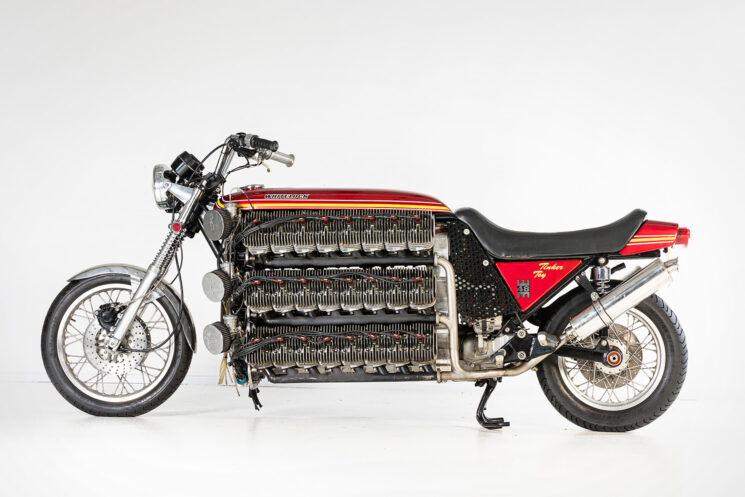
2003 Whitelock Tinker Toy
Whether you consider it an oddity or a mechanical marvel, Simon Whitelock’s 4,200 cc Kawasaki two-stroke is undoubtedly a testament to hair-brained gearhead science. Born from an ever-increasing addiction to multi-cylinder Kawasakis, Whitelock’s latest build captured the Guinness World Record for the most amount of cylinders in an engine for a land vehicle at 48, and one of the top hammer prices at Bonhams’ Spring Stafford Sale.
Nicknamed ‘Tinker Toy’ after a B-17 Flying Fortress bomber from WWII, Whitlock’s creation is built from six banks of eight cylinders each. All the engine parts are from Kawasaki KH250 donors, which Whitlock chose because parts were plentiful and cheap.
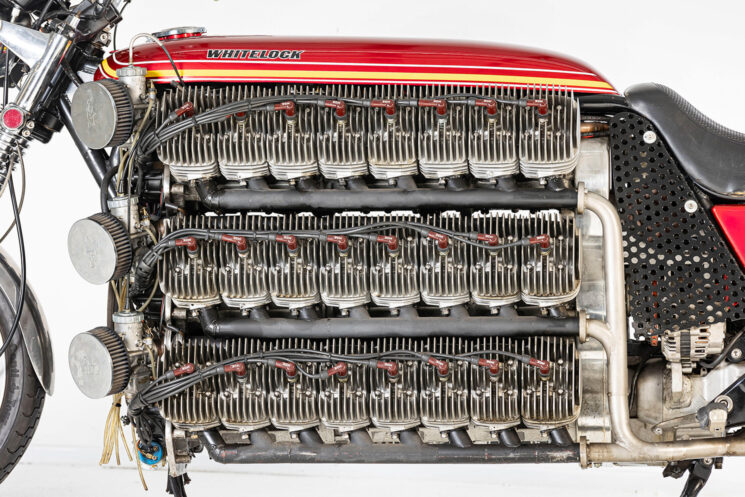
The engine block is completely custom, as are the fuel and ignition systems, while the gearbox was taken from a BMW K100. Custom-built, heavy-duty wheels and a Goldwing front end were added to support the bike’s 1,300-pound heft, and a separate 125 cc pony motor is used to fire the mighty 48-cylinder two-stroke. Despite being a bit impractical, the bike satisfies all legal requirements in England, where it holds a full license.
Whitelock’s Tinker Toy crossed the block as Lot 444, smashing Bonhams’ pre-auction estimate by a healthy margin at £92,000 [$114,627].
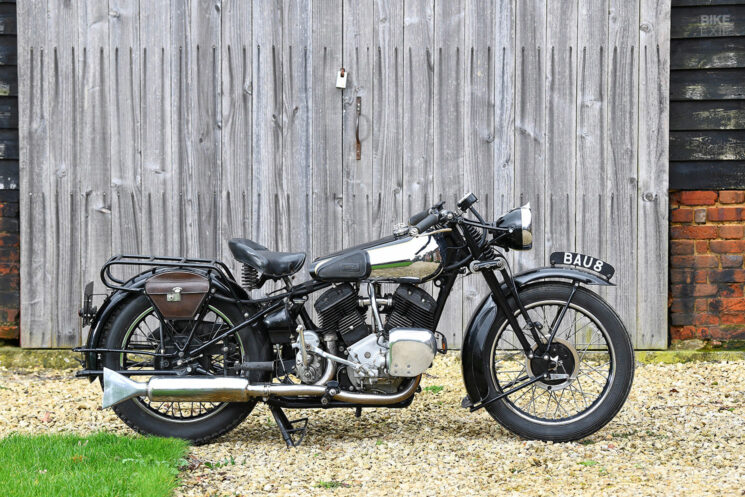
1935 Brough-Superior 11/50
This Brough-Superior wouldn’t have been the most welcome sight in your rearview mirror back when it was new, and it’s not just because of Brough’s reputation for fast motorcycles. One of six identical bikes purchased new by the Nottingham City Police, this Brough 11/50 was registered under BAU 4 and saw active police duty with a sidecar in a past life.
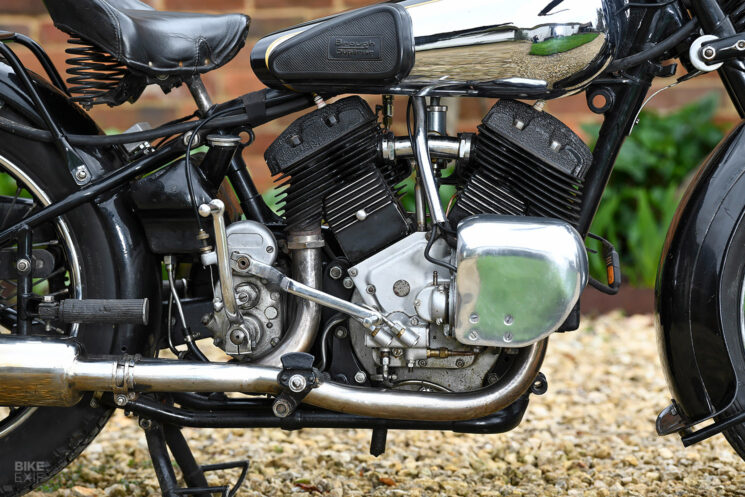
Brough developed the 11/50 model in the early 1930s as an attractive option for law enforcement agencies who needed powerful and reliable machines. Although the 11/50 was made to order, most features were taken from the SS (Super Sports) models, albeit with a 1,100 cc side-valve JAP with conservative compression.
Enjoyed over the years, BAU 4 is well documented back to the 1950s and was restored to its former glory in 2008. Offered with a Brough petrol-tube sidecar chassis and a 1961 Watsonian Avon sports sidecar, Lot 380 sold to a high bid of £78,200 [$97,422].
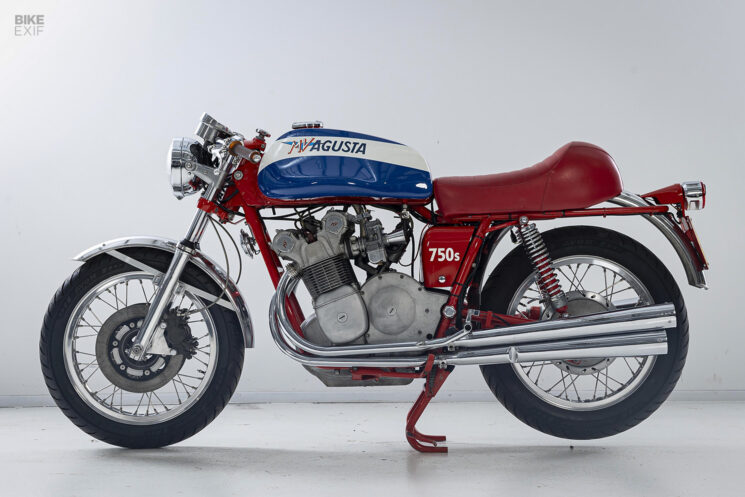
1974 MV Agusta 750S
A breathtakingly fashionable machine in its day, the MV Agusta 750S was a return to form for MV. While the company had made a name for itself in performance and racing circles, changing times shifted MV’s focus to touring bikes like the Agusta 600, and sales flopped.
MV’s antidote to the failed 600 wasn’t a ground-up effort, but instead, a drastic visual transformation with more displacement, more sporting controls and ergonomics—and most importantly—an exquisite exhaust system.
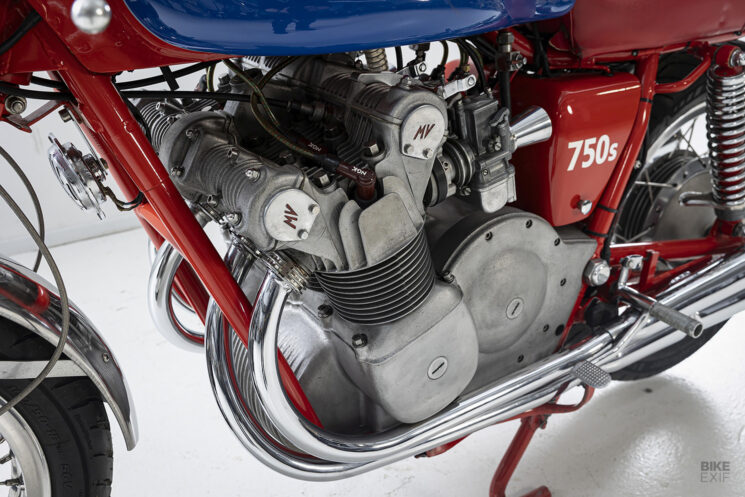
The powertrain was built to race-spec in true MV fashion, even if its output wasn’t staggering for the day, with six main bearings, four 24 mm Dell’Orto carburetors and 9.5:1 compression. The vibrant paint scheme was equal parts eye-catching and classic and was sure to grab attention wherever it went.
MV would produce just 583 total machines across the 750 line, and Bonhams sites that just 186 were built to the spec of Lot 414—it being a 1974 model with the new Scarab disc brakes, 26 mm carburetors, higher compression and improved induction.
Restored in 1991 and presented in great running, near concours, condition, this ’74 MV 750S sold for (a fitting) £74,750 [$93,363].
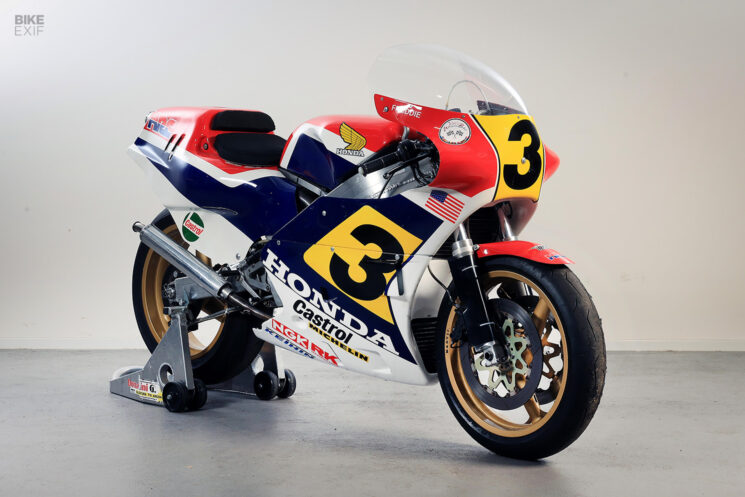
1987 Honda RS500
Paging through Honda’s Grand Prix history of the 1980s, one may miss the history of the NS500 altogether—it being sandwiched between the innovative but unsuccessful NR500 and the exalted NSR500. The NS500 was Honda’s backup plan after the oval-piston, four-stroke NR500 flopped, and this reed-valve triple existed when the other manufacturers were touting more powerful four-cylinders.
Noted for its superior maneuverability and cornering speed, the featherweight Honda would have its time in the limelight, winning the 1983 500 cc World Championship and the 1983 Macau Grand Prix. 1983 was the NS500’s swan song though, being replaced by the NSR for the ’84 season, and leaving the reed-valve triple to the privateers with the RS500—which was nearly identical to the team machines with the exception of the exhaust.
Lot 391 is a 1987 RS500 campaigned in period by Fabbio Biliotti, and was sold with Biliotti’s Team Servisco competition bodywork for £73,600 [$91,993].
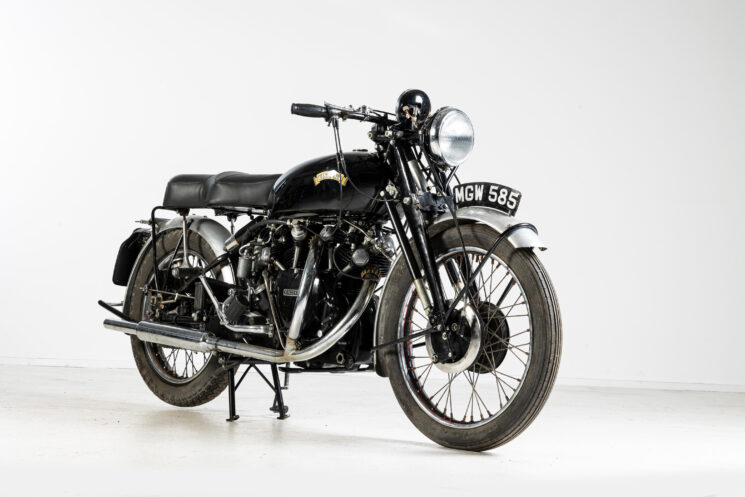
1951 Vincent Series-C Black Shadow
One of the most revered marques in motorcycling, black-clad Vincent made roughly 11,000 bikes from 1932 to 1955, with the Black Shadow being undeniably the most iconic. It’s not hard to see why, as the Shadow was simply the fastest thing on wheels in those days, and its 125 mph top speed left even the highest-end cars in the dust.
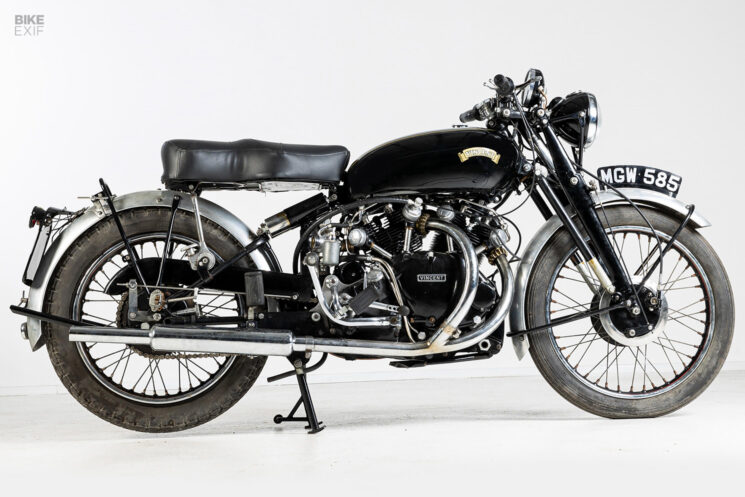
Vincent had arguably perfected their V-twin platform by the time the Series-C bikes came into production in 1948. The 998 cc engines had higher compression than the Rapide, an improved four-speed transmission employed unit construction and the Brampton forks were replaced with Girdraulic blade-type girders. Even with its tiny 7-inch drum brakes, Series-C Vincents were considered the standard for performance and handling in their day.
Since the Black Shadow was such a success for Vincent, they made a whole lot more of them, just over 1,700 by the best estimates, and prices are all over the map. Series-C bikes have brought over $150,000, and less than $50,000 in recent years, and Bonhams’ Lot 367 landed somewhere in the middle at £46,575 [$58,222].
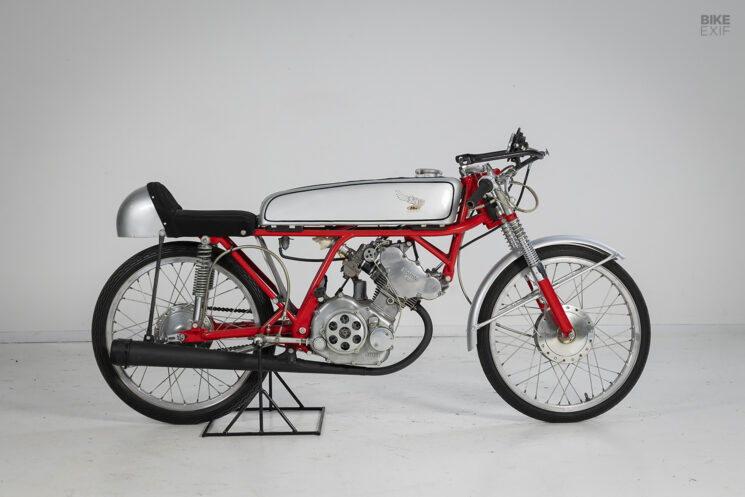
1963 Honda CR110
50 cc, eight forward gears and 8.5 hp at 13,500 rpm; four figures that tell you nearly everything you need to know about the Honda CR110. Built for privateers as an over-the-counter version of Honda’s small-displacement Grand Prix works machines, the CR110 served as a reliable mount for many up-and-coming pros.
Honda was making up for lost time in road racing in the early 1960s, and the RC110 factory race machines seemed like just the thing to extend success to the 50 cc class. The bikes were light at just 130 pounds wet and handled like a dream, but one small issue was overlooked—horsepower. Seriously underpowered compared to the competing two-strokes, the factory team only managed a few podium finishes, and the effort would go down as Honda’s worst humiliation of the early ’60s.
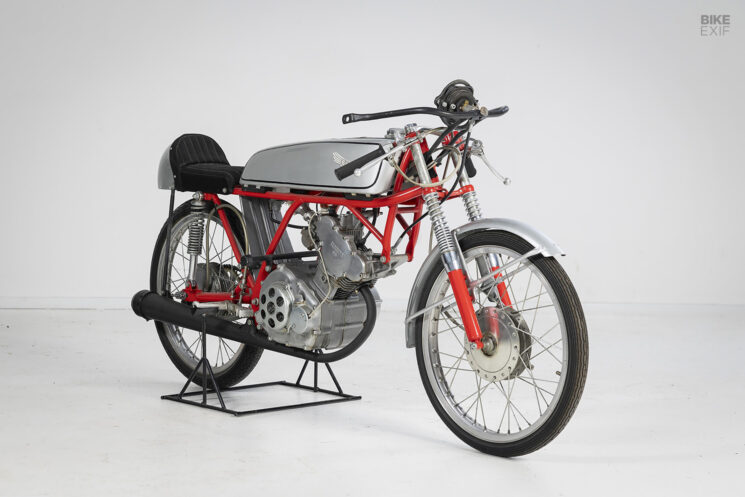
Oddly enough, the CR110 privateer machine enjoyed more success, with roughly 220 bikes sold. They were built to nearly the same spec as the works bikes, but with a more sensible eight-speed transmission instead of the racer’s nine and a reduction of 3,500 rpm at peak power.
Almost nothing is known about Lot 232’s early life, but it’s since been with the same caretaker since 1994. The impeccable condition of the bike brought a hammer price of £46,000 [$57,569], proving big things do come in small packages.
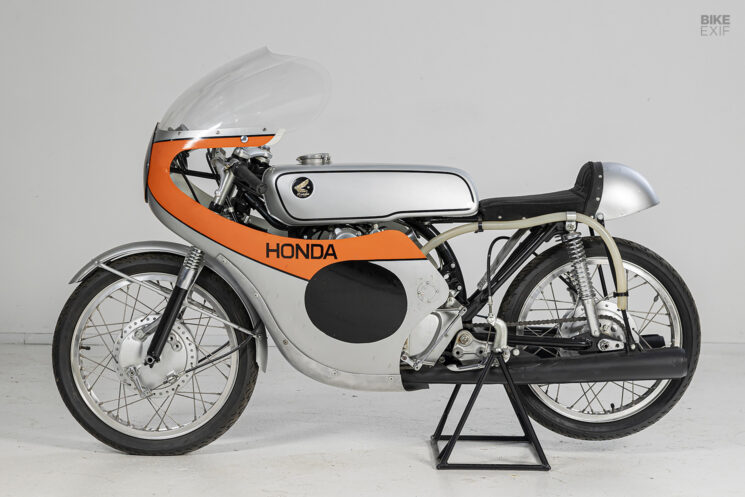
1963 Honda CR93
Like the CR110, the CR93 was a part of Honda’s push for road-racing excellence in the early 1960s, and results proved much more favorable in the 125 cc class. Honda came prepared to the Isle of Man in ’59, and their reliable 125s took four of the top 11 positions and secured the 125cc Class Manufacturers Cup. In 1961, they’d sweep the top five.
The 125 cc CR93 model extended Honda’s small-displacement offerings to privateers, and like the CR110, the 93 was built to nearly the same spec as the works machines. The four-stroke twin employed gear-driven overhead cams, four valves per cylinder and made 16.5 hp at 12,000 rpm. Between 1962 and ’63, it’s estimated that Honda built 150 to 200 CR93s.
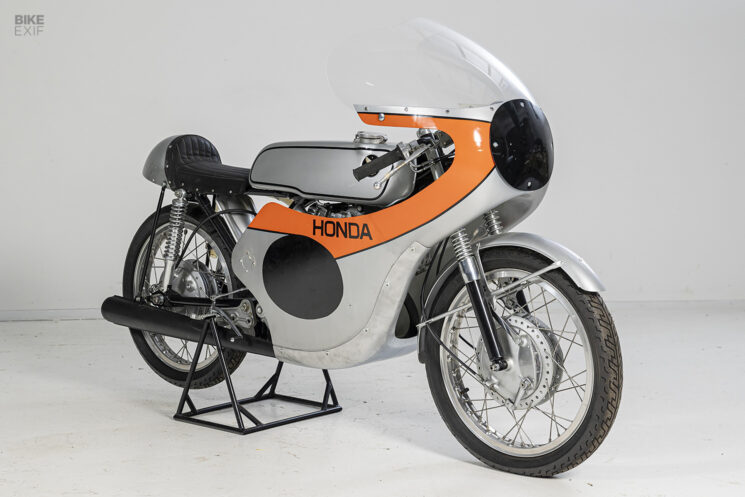
Lot 223 looks to be an excellent example of the marque, wearing a full fairing and excellent paintwork. After a period of inactivity, Bonhams states that the engine turns, but the transmission will not go into gear. When the hammer fell, the CR93 brought a bit less than its 50 cc brother at £43,700 [$54,533].
Source: Bonhams
